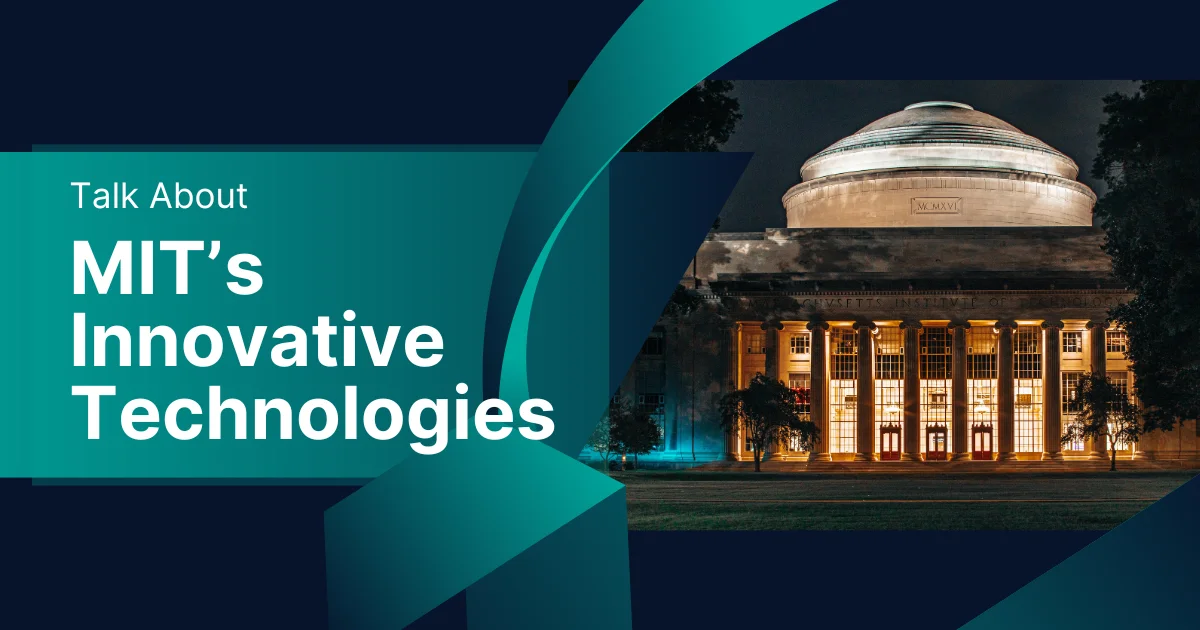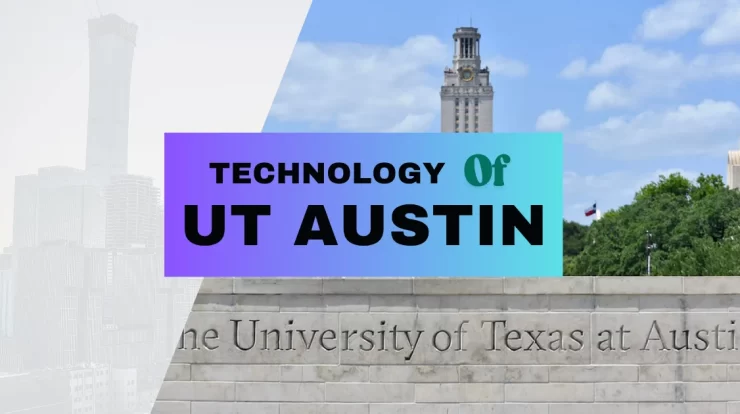
Today’s world is interconnected with AI technologies. If you are an enthusiast for smart innovation, MIT is the perfect university. Intelligent, sustainable cities are becoming more critical as global urbanization increases, and climate change accelerates. Combining IoT, artificial intelligence, and data analytics to create greener, more efficient metropolitan settings, MIT (Massachusetts Institute of Technology) spearheads the charge with innovative research in smart city technologies.
Whether your interests are urban planning, technology, policymaking, or education, this in-depth exploration of MIT’s smart city ideas provides insights into the direction urban life is headed and why MIT is leading the globe in bringing that vision to pass.
Contents
- What Is a Smart City and Why Does It Matter Today?
- How Is MIT Redefining Urban Development Through Innovation?
- What Are the Components of a Smart City According to MIT?
- What Are Some Real-World Smart City Projects by MIT?
- How MIT’s Innovations Impact the Environment and Society?
- Ethical Challenges and MIT’s Smart City Solutions
- How MIT Uses Big Data & Urban Visualization Tools?
- Conclusion
What Is a Smart City and Why Does It Matter Today?
More than simply a phrase, a smart city is a linked urban ecosystem that uses cutting-edge technologies to increase efficiency, lower waste, and raise local quality of life. Important technologies include real-time data analytics, smart sensors, and artificial intelligence-driven automation.
MIT describes a smart city as one that welcomes sustainable innovation. This entails embedding digital solutions into infrastructure, including housing, electricity, and transportation, to produce habitable, climate-resilient settings. In a world of rising population and environmental hazards, smart cities are not optional; they are necessary.
Smart cities are meant to address the most urgent problems with contemporary urban living. From traffic congestion to energy inefficiencies and environmental damage, smart cities handle issues in ways conventional urban systems cannot. From MIT’s point of view, these cities must also be inclusive and fair so that everyone gains from technological developments.
How Is MIT Redefining Urban Development Through Innovation?
Entities like the MIT Media Lab’s City Science Group and the Senseable City Lab drive MIT’s initiatives in innovative city development. These research groups center on MIT smart cities and reimagine how data, design, and human behavior interact in urban environments.
Emphasizing equity, resilience, and long-term livability, their strategy consists of sustainable transportation, infrastructure, and governance innovation of MIT. MIT is leading the worldwide research movement for future cities, combining engineering, architecture, and social science.
To put their research into use in practical environments, MIT also works with organizations, commercial businesses, and local and foreign governments. From prototype to full-scale implementations, these alliances enable scale for creative ideas. The whole methodology of MIT for urban development guarantees that smart city technologies are created inside a larger system of human-centered design rather than in isolation.
What Are the Components of a Smart City According to MIT?
MIT notes several basic elements of a smart city:
- Infrastructure driven by data
- Instruments for digital urban planning
- Green architecture and clean energy
- Smart transportation systems
- Artificial intelligence and machine learning for municipal services
These innovative infrastructure components from MIT make cities flexible, sustainable, and responsive. From buildings that automatically cut energy consumption to traffic systems that change in real time, MIT defines what makes a city “smart.”
These elements help a city react flexibly to everyday operations and long-term changes. Innovative trash management systems, for example, employ sensors to quickly schedule pickups and identify bin capacity. In the age of climate change, smart grids also enable the ability to balance energy distribution depending on demand patterns and weather forecasts.
Key Technologies Used in MIT’s Smart City Projects
A. Internet of Things (IoT)
MIT is establishing a fundamental, innovative infrastructure building capability using the Internet of Things. The university has set up urban IoT networks all over the cities to gather real-time traffic, air quality, energy usage, and garbage levels. Sensor-based infrastructure supported by these linked devices and smart sensors enable safer and more efficient urban settings.
One notable study, “Real-Time Rome,” was conducted by MIT and used cell phone signals to track urban movement patterns. These revelations can help urban designers maximize energy grids, garbage collection systems, and traffic patterns.
B. Artificial Intelligence (AI)
MIT’s bright city ideas revolve heavily around artificial intelligence. Designed at MIT, AI traffic control systems dynamically change signal timing to ease congestion. Predictive urban artificial intelligence models replicate how cities might react to different circumstances, including population spikes or environmental disasters.
MIT’s AI energy optimization initiatives greatly lower energy waste through machine learning to control building heating and cooling systems. Robotics and artificial intelligence tools also improve urban operations, from maintaining logistical hubs to street sweeping.
C. Data Analytics and Visualizing
Mass data examined through MIT’s urban data labs drives the creation of smart cities. These labs create real-time analytics seen on urban dashboards created by MIT researchers, which enable municipal planners to make data-driven decisions rapidly.
Considerable data in urban planning make predictive maintenance, efficient zoning, and improved disaster response plans possible. MIT supports open and cooperative planning by using spatial visualization to let stakeholders see how urban plans develop over time.
What Are Some Real-World Smart City Projects by MIT?
MIT’s smart city technologies are applied in big cities worldwide, not in theory.
- Combining real-time data and predictive analytics, MIT worked with Singapore to create a city-wide mobility-on-demand system.
- The institution teamed with the municipal government in Boston to maximize traffic systems and emissions monitoring.
- MIT started autonomous transportation and logistics tests in Hamburg’s port districts to ease traffic and lower carbon output.
These MIT smart city case studies work as templates for cities worldwide and show the actual influence of MIT’s urban technology research.
The Andorra project also shows how data might maximize tourism and transportation in small nations. MIT demonstrated that smart city technology is scalable and flexible by helping the nation control tourist flows more effectively using data analytics, thereby establishing its relevance.
How MIT’s Innovations Impact the Environment and Society?
MIT’s smart city technologies offer significant environmental advantages.
Carbon-Neutral Initiatives:
MIT’s smart city technologies focus on lowering carbon emissions through smart grids, public transportation enhancements, and energy-efficient structures.
Energy Optimization:
AI and IoT technologies control heating, cooling, and lighting in urban infrastructure to reduce energy waste.
Design with Climate Resilience:
The projects examine how cities might adjust to various effects of climate change, including heat waves and increasing sea levels.
Equitable Urban Planning:
Fair access to innovative services is something MIT stresses so that tech developments help underprivileged areas.
Cleaner, Greener Cities:
Green roofs, innovative trash management, and pollution-monitoring sensors help towns enhance water and air quality.
Sustainable Infrastructure:
Research by MIT supports long-term city design, including sustainability, at every level, from utilities to roadways.
For instance, MIT’s Inclusive Smart Cities project looks at how digital tools could empower underprivileged groups. MIT guarantees that technology advances everyone, not only the privileged, in terms of safer metropolitan settings or easier access to public services.
Ethical Challenges and MIT’s Smart City Solutions
Smart cities mainly depend on data, so ethical issues like privacy, monitoring, and digital equity surface. Through research in MIT tech ethics and urban governance systems, MIT is firmly committed to addressing these challenges.
Projects examine subjects such as data anonymization, algorithm transparency, and ensuring technology does not support inequity. Following MIT’s urban tech policy, the university supports public participation in decision-making and unambiguous ethical standards.
The MIT Internet Policy Research Initiative seeks to establish rules that guarantee consent in data collection and prevent the abuse of surveillance technology. Given the widening digital divide, MIT also stresses the need for reasonably priced and readily available technology for all urban people.
How MIT Uses Big Data & Urban Visualization Tools?
Smart city technologies have become understandable and practical largely because of MIT’s urban data labs. Researchers create real-time urban dashboards to show performance and identify trends by aggregating enormous datasets from smart city data sources.
MIT spatial visualization tools allow municipal planners and authorities to virtually evaluate new designs before their actual execution, minimizing expensive errors. Future-proof urban design depends on this data-driven city planning, which guarantees evidence-based development choices.
Moreover, seeing data enables communities to interact in the planning process. Residents are more willing to support and help innovative projects when they can observe how traffic patterns or energy use affect their area. MIT thinks that successful, innovative city development depends on educated people.
Conclusion
MIT is good at building smart cities that are fair, efficient, and good for the environment. MIT helps cities become cleaner, safer, and better for all by means of smart technologies, including IoT, artificial intelligence, and big data. From fixing traffic congestion to conserving energy, their efforts demonstrate how creativity may build a brighter future for all. MIT’s goal will guide wiser and more environmentally friendly urban living globally as cities expand.





